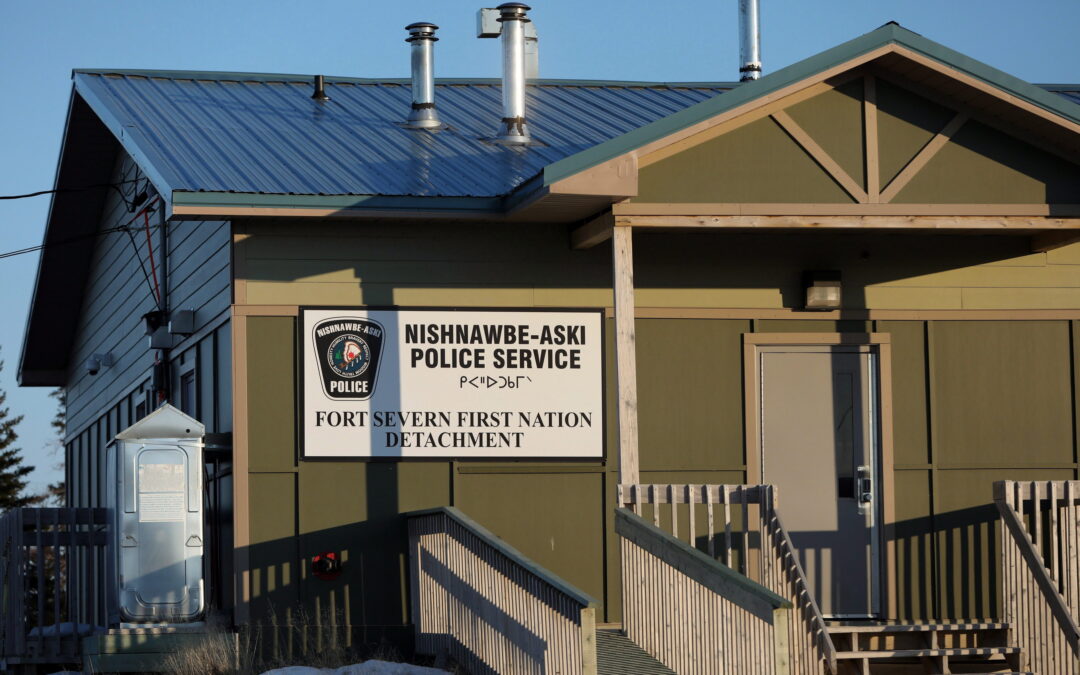Lost in the mix of more provocative news about tariffs and political disarray that dominated the end of the year, Ontarians can be forgiven if they failed to note the significance of an agreement on policing announced with relatively little fanfare in a mid-afternoon Tuesday news release.
An agreement signed on December 12th between the Nishnawbe Aski Nation (NAN) and the Ontario Government is symbolic of a profound crossroads in the relationship between First Nations and the provincial government. It both addresses long-standing challenges while introducing new questions about sovereignty.
This new agreement brings the Nishnawbe Aski Police Service (NAPS) under the oversight of Ontario’s Community Safety and Policing Act, the provincial legislation governing police services in Ontario – making it the only First Nations police service to opt-in under the provincial law or its predecessors. In doing so, NAPS becomes formally recognized as an essential service under Ontario law, with the same investigative powers, service standards, governance model and funding mechanisms as non-Indigenous police services in the province. Treaty 9 – one of the two treaties encompassing the Nishnawbe Aski Nation – is also the only one of the so-called numbered treaties within Ontario that included representatives of both the Federal and provincial governments as signatories.
The practical impact for NAPS is expected to be transformative. Despite being the largest First Nations police service in Canada, with over 260 uniformed officers, NAPS has an incredibly difficult and specialized mandate. Its jurisdiction includes 34 distinct communities, most of which are remote, and covers the entirety of Treaty 5 and Treaty 9 territory – without the resourcing or authorities that its predecessor (the Ontario Provincial Police) enjoys. Prior to this agreement, funding support for First Nations policing largely derived from the First Nations and Inuit Policing Program, a joint framework established in 1996 that governs cost-sharing between the Federal and Provincial government – and widely seen as ineffective and insufficient to the needs of First Nations police services. A Federal court decision rendered in 2022 went so far as to state that the funding model for Indigenous policing in Canada “operates in an arbitrary and discriminatory fashion.”
Concurrent to the ratification of the agreement between NAN and the Ontario Government was the negotiation of a $514 million funding framework. That infusion of much-needed capital will see NAPS substantially increase in size to over 500 uniformed officers in the years ahead. In addition to providing capital needed for frontline policing, equipment and infrastructure improvements, NAPS will now be authorized to undertake many investigative functions and create special units that were previously outside its jurisdiction.
The response from First Nations leadership has thus far been positive, with clear demonstrations of support from perspectives as varied as Ontario Regional Chief Abram Benedict and NDP MPP Sol Mamakwa. Mr. Mamakwa is a member of a NAN-affiliated First Nation and whose Kiiwetinoong electoral district covers most of the communities under NAPS policing jurisdiction. There is a general recognition that chronic underfunding has contributed to dangerous circumstances for both residents and police in these communities – and has left them disadvantaged to deal with present crises including drug abuse, domestic and gender violence, and community safety.
Despite all of these positive developments, the step to come under provincial oversight raises new questions and issues to follow. The creation of First Nations and Indigenous police services, despite the resulting challenges, was a watershed moment in the recognition of Indigenous sovereignty in Canada. The result of very challenging negotiations in the early 1990s, it provided a roadmap to empowering First Nations and Indigenous peoples with greater control and leadership of the institutions and services in their communities. While formal adherence to provincial legislation and the associated funding will raise standards – it also raises questions about whether hard-fought sovereignty was surrendered in the process. NAPS will find itself governed by legislation that envisions it as the same as other police services in Ontario, and while the best of intentions may see this as a special relationship, experience has taught that unintended consequences have a way of emerging. Tensions often emerge from circumstances in which First Nations-led institutions, especially when responsible to external authorities or legislation, can over time become perceived by the people they are serving as no better than the colonial institutions that they replaced.
This question of sovereignty should also be considered through the lens of the relationship between NAPS and the communities and people it serves. An important part of the genesis of First Nations and Indigenous policing was to bring greater cultural sensitivity to policing in these communities in recognition of the abuses of the past. This mission can best be described as work in progress, as many of the same problems and sources of mistrust have persisted. The infusion of more funding offers opportunity to shift this dynamic, but with much of that funding likely earmarked for hardware, personnel and infrastructure, community members may take a “wait and see” approach before celebrating this agreement.
Bringing NAPS under the oversight of provincial legislation is also relevant to the Ontario Government’s economic development objectives. Ontario’s Ring of Fire – a vast, untapped and difficult-to-access source of rare minerals – lies entirely within the Treaty territory associated with NAN. As major infrastructure, transmission and development agreements with First Nations proceed with greater rapidity, the recognition of NAPS under provincial law opens the door to recognizing NAPS as the primary police service with jurisdiction in the Ring of Fire. It is entirely possible that in the foreseeable future, those working in a mature Ring of Fire economy may find themselves within the jurisdiction of NAPS officers and investigators – a remarkable assertion of Indigenous sovereignty within Treaty territory.
As with so many developments hailed as a landmark or watershed moment, we will be watching closely to see how the many repercussions of this agreement will unfold.
Counsel Supports Your Engagement with Indigenous Peoples and Communities
Engaging with Indigenous communities in Canada requires a thoughtful approach that respects rights, culture and tradition. The Nibwaakaawin team at Counsel Public Affairs has provided strategic guidance and led major engagement & facilitation initiatives involving sensitive political issues on behalf of industry, governments and government agencies under the leadership of principal John Beaucage, one of Canada’s most respected Indigenous leaders. Nibwaakaawin – meaning wisdom in the Ojibwe language – reflects our team’s commitment to support culturally sensitive and respectful engagement with Indigenous communities that supports positive outcomes for all involved. This includes client-focused training to build understanding of First Nations and Indigenous rights, evolving responsibilities to address these, and practical approaches to mitigate risk and build positive relationships with Indigenous peoples and communities. We welcome the opportunity to help guide your engagement journey with First Nations and Indigenous peoples across Canada.
Devan Sommerville
Vice President
dsommerville@counselpa.com
John Beaucage
Principal
jbeaucage@counselpa.com



